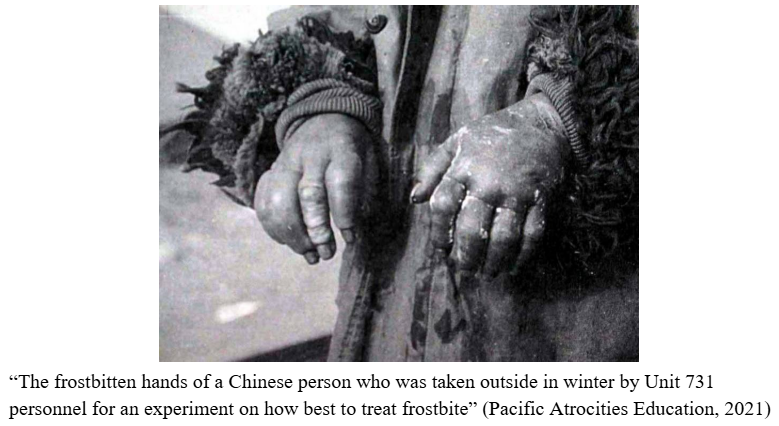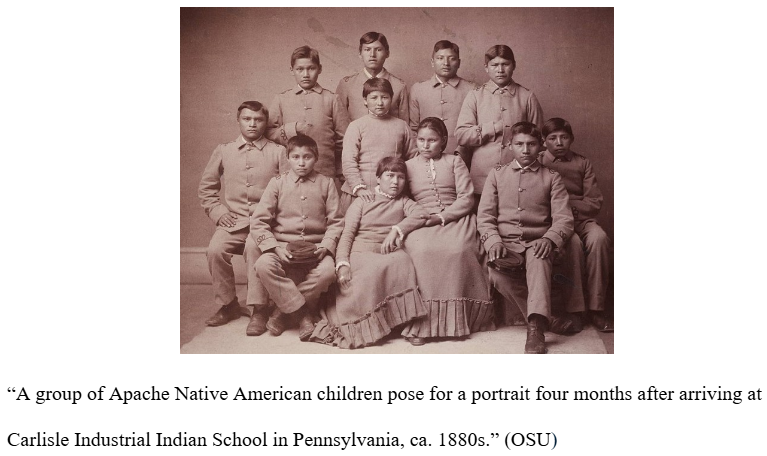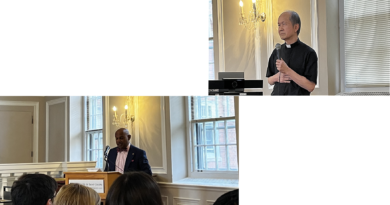A Student Analysis of Gyeongseong Creature: Historical Erasure from the Pacific to the U.S.
Written by Nova Brown
CAUTION: THIS ARTICLE CONTAINS TOPICS OF BRUTALITY AND HUMAN EXPLOITATION
Gyeongseong Creature is a Netflix K-drama series starring popular actors Park Seo-joon, Wi Ha-joon, Han So-hee, and Claudia Kim. This historical drama takes the viewer back to the spring of 1945, when Korea was known as Joseon under Japan’s colonial rule. Set in Gyeongseong (now known as modern-day Seoul), the show intertwines historical tragedy with sci-fi horror that highlights the brutal realities of Japanese occupation. This breathtaking series not only serves as a tear-jerking thriller, but it also plays a critical role in preserving history and the importance of education. Imperialist Japan ruled over Korea from 1910 to 1945, using inhumane tactics to maintain control. These tactics include forced labor, cultural erasure, unfair laws and regulation, police brutality, and nonvoluntary medical experiments; all of which were portrayed with respect and accuracy in the television series. While other former imperial powers, like Germany and Britain, have —to some degree—taken accountability for their oppressive past, Japan’s government has continuously refused to take full accountability for their war crimes. Some are listed above, but one of the most highlighted crimes includes the sexual enslavement of Korean women and children who were known at the time as “comfort women” (Bisland et al, 2019). Japanese enforcement would also kidnap Korean citizens and conduct biological experiments seen in chemical warfare units like Unit 731 or Unit 100 along their subsidiary branches.
Unit 731, also known as the Kamo Detachment, was the inspiration for this hit K-drama. Chemical warfare division Unit 731 was infamous for its human experimentation during WWII. Japanese soldiers kidnapped over 700,000 men, women, and children and subjected them to various biological based experiments. They endured total dehumanization physically and psychologically, as they were considered to be “marutas”, or logs (Pacific Atrocities Education, 2021). They would test these victims for their reaction to illnesses like the bubonic plague and typhoid. Many Japanese scientists would perform live surgeries on civilians without anesthesia before and after they were infected with diseases. Those who were subjected to testing, mainly women and children, had also been subjected to experiments on frostbite, weapons testing, along with rape and forced pregnancy.
The importance of remembering and educating history extends beyond East Asia, as the erasure of colonial history is not isolated to Japan; it is a global issue. For example, the United States has rich historical experiences in colonization and history erasure. As seen in the decades of Indigenous peoples’ erasure, as well as the conquering of Puerto Rico and Hawaii, the U.S. has been an expert in strategic colonization, shaping and maintaining a patriotic image. From the founding of the U.S. to the present day, policies by federal, state, and local governments have consistently marginalized and dehumanized Indigenous people. An example of this is how Indigenous children were forcibly taken from their families and placed in Christian boarding schools. There, these children were stripped of their identities, prohibited to speak their native languages, and then punished with brutal psychological, physical, and sexual abuse. Many children died in these schools, while their parents were being abused and murdered by unjust policing systems, laws, and dangerous stereotypes.
The scars of cultural genocide continue to affect Indigenous communities to this day. The concept of ‘The Vanishing Indian,’ which suggested that Indigenous people would eventually die out, fueled social violence and discriminatory policies against the Indigenous People. This ideology also became justification for land seizures, community displacement, and systemic oppression, which overall led to the establishment of reservations. Reservations are lands where the majority of Indigenous populations live in isolation, with limited access to resources, dire living conditions, and ongoing socio-economic struggles.. The neglect and underfunding of reservations today stems from the long-standing effort to Indigenous culture and peoples.
Under new administrations for the past decade, the trend of historical revisionism has infected public and private school systems. Due to internet censorship, book bans, and the massive budget cuts to education departments, the U.S. colonial and imperialist past has been hidden from the eyes of students. Many lawmakers have actively restricted discussions on systemic racism, slavery and its atrocities, and U.S. imperialism in school, branding it as “harmful to children” or “anti-American” (OSU 2021). This suppression of history parallels Japan’s handling of its colonial past, as both nations characterize themselves as strong and just powers while doing so through the brutalization and marginalization of others. This also demonstrates how political and economic elites benefit from the erasure of history, allowing the public to remain uneducated and ignorant of historical injustices that continue to occur today.
Gyeongseong Creature, a stand-alone masterpiece, serves as a reminder that history is not just a collection of important people and dates, but a living example that shapes present-day laws and policies. The series inadvertently urges viewers to question government official narratives, as the old age saying goes, “history is written by the victors.”
For more information about Japanese colonization, please visit Pacific Atrocities Education or read “Unit 731” written by Derek Pua.
For more information on U.S.erasure of history or censorship, please visit NPR and PBS to read related articles, or check out some books onIndigenous erasure, such as “A Nation of Immigrants” by Roxanne Dunbar-Ortiz.
Featured image owned by Netflix.
Additional Resources:
Bisland, Beverly Milner (Lee), et al. “Teaching about the Comfort Women during World War II and the Use of Personal Stories of the Victims.” Association for Asian Studies, 2019, www.asianstudies.org/publications/eaa/archives/teaching-about-the-comfort-women-during-world-war-ii-and-the-use-of-personal-stories-of-the-victims/.
Cunliffe, William. Select Documents on Japanese War Crimes and Japanese Biological. 1934, www.archives.gov/files/iwg/japanese-war-crimes/select-documents.pdf.
Hall, Lisa Kahaleole. “Strategies of Erasure: U.S. Colonialism and Native Hawaiian Feminism.” American Quarterly, vol. 60, no. 2, 2008, pp. 273–80, www.jstor.org/stable/40068535.
Johnson, Kishor. “A Scientific Method to the Madness of Unit 731’S Human Experimentation and Biological Warfare Program.” Journal of the History of Medicine and Allied Sciences, vol. 77, no. 1, Dec. 2021, https://doi.org/10.1093/jhmas/jrab044.
Martin, Michel, and Lennon Sherburne. “Among Many Native American Communities, Their Languages Are in Danger.” NPR, 3 Dec. 2022, www.npr.org/2022/12/03/1140610713/among-many-native-american-communities-their-languages-are-in-danger.
Pacific Atrocities Education. “Human Experimentation at Unit 731.” Pacific Atrocities Education, 2021, www.pacificatrocities.org/human-experimentation.html.
Sang, Kau’i. “Hawaii DOE | History of Hawaiian Education.” www.hawaiipublicschools.org, www.hawaiipublicschools.org/TeachingAndLearning/StudentLearning/HawaiianEducation/Pages/History-of-the-Hawaiian-Education-program.aspx.





